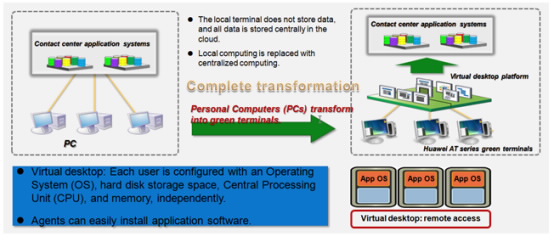Solución de línea directa de gobierno
One primary mission of service-oriented governments is to provide the public with convenient, comprehensive information consultation and communication services.
Solución de línea directa de gobierno
One primary mission of service-oriented governments is to provide the public with convenient, comprehensive information consultation and communication services.
One primary mission of service-oriented governments is to provide the public with convenient, comprehensive information consultation and communication services.
Around-the-clock government hotlines enhance public service quality, improve government agency efficiency, and improve relationships with the public.
Typical existing hotline operation modes, however, in which each government agency has its own hotline often incur duplicate construction and investments and wasted labor resources. In addition, citizens may find have difficulty remembering the various hotlines. Also, service standards not unified across agencies, hindering cross-agency collaboration.
Hotline resource consolidation and one-stop construction are ideal solutions for governments, which must integrate hundreds of hotlines into a single hotline system, such as the 12345 hotline system, to provide one-stop services to the public.
Huawei's government hotline solution is a call center solution, integrating voice technologies, communication technologies, computer networks, and database technologies that support multiple media access, including telephone, fax, email, and Internet.

Figures 1:Huawei Hotline Solution Architecture

Figures 2:Environmentally Friendly Agent Desktop Cloud Solution
Traditional agent operating systems and application software must be deployed at each terminal, which incurs high security risks. Thin Clients (TCs) on the desktop cloud do not save data, and digital certificates are installed on TCs to authenticate terminal IDs before accessing the network. Additionally, Secure Sockets Layer (SSL) transmission is employed to prevent user data loss and to facilitate security configuration and management.

Figures 3:Audio Optimization Solution
Agents used in the hotline solution integrate Internet Technology (IT) and Computer Technology (CT) applications and use an industry-universal desktop cloud architecture. Single IT applications cannot optimize CT applications (especially audio), resulting in substantial network delays, low audio quality, and poor user experience. Leveraging years of experience and expertise in developing audio applications, Huawei's audio optimization solution combines Intelligent Communicating Agent (ICA) and Real Time Protocol (RTP) to transmit audio and ensures the average Mean Opinion Score (MOS) is higher than 3.6. This transmission mode enables end-to-end audio optimization and ensures high audio quality.
Huawei's government hotline system comprises four subsystems: access processing, business handling, knowledge base management, and subsystems for management and monitoring.

Figures 4:Functional Modules in the Government Hotline Solution
The call handling subsystem is the basic subsystem in the government hotline solution. It is developed based on an integrated platform to provide unified access and multimedia interaction for upper-level business systems.
The business handling subsystem handles information reported by citizens using the telephone, Short Message Service (SMS), fax, email, or online registration. Open and scalable, it is developed based on the J2EE platform and Oracle database.
The knowledge base management system provides a unified knowledge sharing platform for the government hotline system. Each functional agency enters and releases the policies, laws, regulations, and hotline issues in the knowledge base system. When citizens are connected to the system platform, the attendants give consistent replies based on the answers in the knowledge base system. The knowledge base system supports a rich set of operations, including search engine, document collection, document review, document management, document discussion, and document learning.
The management and monitoring subsystem manages and monitors all service objects and service items using reports.
Carrier-class large-capacity call centers support smooth capacity expansion based on hotline workload and ensure stable, reliable operation.
All calls are uniformly connected to the hotline platform for efficient platform resource sharing and improving the call connection rate.
Agents are centrally deployed to reduce labor cost.
Distributed access is provided for all government agencies to facilitate service processing.
SSL-based transmission protects user data.
Isolation of Virtual Machine (VM) user data, access control, Residual Information Protection (RIP), and encryption for all data comprehensively ensure storage security.
Antivirus software and centralized security patch management improve Operation and Maintenance (O&M) efficiency.
Digital certificates and data storage on the cloud platform ensure terminal security.
The average MOS is higher than 3.6, ensuring high audio quality.
Compared with traditional PCs, the desktop cloud system features lower energy and maintenance costs and reduced Operation Expense (OPEX).
Users can customize workflows and set the procedure for processing orders.
The knowledge base subsystem provides consistent and standardized answers with high accuracy, reduced duplicate workloads, and consistent services for public convenience.
Various report types inform users about system operating status and real-time progress of work order processing. The inspection monitoring function can effectively monitor and manage system operating status in real time.
Huawei's hotline solution offers customers the following benefits:
Copyright © Huawei Technologies Co., Ltd. 1998-2017. All rights reserved.
Términos & Condiciones|Política de Privacidad|Mapa del sitio|Contacto Local TAC